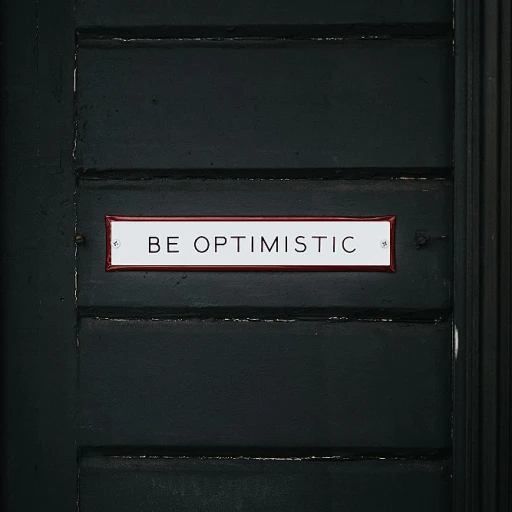
Understanding Automated CV Screening
Decoding the Role of Automation in Resume Evaluation
In today's fast-paced recruitment landscape, automated CV screening has become a pivotal tool for employers aiming to streamline their hiring process. This innovation revolves around software that can sift through countless resumes, identifying qualified candidates based on specific job requirements and criteria. The process not only saves time but also enhances the overall candidate and recruiter experience. Gone are the days when recruiters would spend countless hours manually reviewing resumes. Thanks to artificial intelligence and modern applicant tracking systems (ATS), companies can leverage automated systems to handle the resume screening process efficiently. These systems filter candidates by scanning resumes for relevant skills, experience, and other pre-set criteria that align with the job description. Automated candidate screening tools, often referred to as screening software or tools, significantly reduce the burden on hiring teams. They allow recruitment professionals to focus on the more human aspects of the hiring process, like interviews and employee engagement initiatives. However, while these tools enhance efficiency, it's crucial to balance them with a personal touch to prevent a purely mechanical hiring experience. As organizations continue to invest in advanced screening automated technologies, it's essential to understand how these tools can transform the recruitment process. To delve deeper into how file management software can further augment this efficiency, enhancing recruitment with effective employee file management software presents a valuable resource for learning more about integrating such technologies into recruitment systems.The Impact on Candidate Experience
The Ripple Effect on Aspirants
Automating the resume screening process is revolutionizing how candidates interact with employers, setting a new standard for the candidate experience. At its core, the efficiency gained helps manage vast volumes of applications swiftly, enabling companies to focus on nurturing talent rather than getting bogged down in manual tasks. But the true impact on candidates goes beyond mere speed.
For candidates, knowing that their applications are processed swiftly by automated systems can lead to a more satisfying experience, reducing the anxiety typically associated with prolonged response times in the hiring process. Automated systems excel in managing expectations by providing timely feedback, often instantly. This immediacy can significantly reduce candidate frustration and enhance overall satisfaction.
Moreover, when these systems utilize advanced screening tools, such as artificial intelligence and sophisticated applicant tracking systems, they become adept at identifying resumes that best match the job requirements. This means qualified candidates are more likely to be recognized based on relevant skills and job criteria rather than a line-by-line manual search by recruiters. As a result, candidates may experience a fairer, more transparent recruitment process.
However, it is important to recognize that ensuring a positive candidate experience with automated resume screening isn’t just about speed and efficiency. The manner in which these automated tools are integrated within the broader recruitment process plays a critical role. Harmonizing the human touch with technology will be explored later, addressing the balance that shapes the best possible experience for all parties involved.
To delve deeper into strategies for optimizing your candidate experience, explore extensive resources available on managing candidate data effectively, such as the insights in this essential tips guide.
Balancing Efficiency and Human Touch
Striking a Balance Between Automation and Personalization
In the quest to improve the hiring process's efficiency and accuracy, many organizations are turning to automated screening tools. While these systems significantly streamline the recruitment process by quickly scanning resumes to identify qualified candidates, they also present unique challenges. It's essential to find the right balance between efficiency brought by automation and the human touch that ensures a positive candidate experience.
Automated candidate screening software can swiftly process numerous resumes based on specific criteria, saving time for recruiters and delivering results at a speed that manual screening would seldom match. However, over-reliance on AI-driven tools can sometimes lead to a sense of impersonality for candidates. This lack of personal interaction can affect the overall experience, potentially turning prospective employees away.
To maintain the quality of the candidate experience, it's crucial that recruitment processes incorporate personal elements alongside automated systems. Recruiters should complement automated tools by making personal follow-ups whenever possible, ensuring that candidates feel valued and recognized beyond their resume data.
Moreover, creating a structured process where candidates receive updates and feedback from actual human recruiters plays a significant role in keeping the process personal. Effective communication helps mitigate any dehumanizing effects of extensive automation, showcasing a company's dedication to treating candidates with respect and empathy.
Investing in applicant tracking systems (ATS) that personalize candidate engagement is also a step towards building this balance. The best systems allow for automated responses that feel genuinely tailored to the individual, aiding in nurturing a strong connection between the candidate and the potential employer. This approach can be a determining factor in how candidates perceive their interactions with a company.
Ultimately, the objective in any hiring process should be to complement the rapid precision of automated systems with the personable expertise of recruiters. By doing so, companies can ensure they not only attract top talent but also engage them in a meaningful recruitment journey that speaks volumes of the company’s ethos and brand.
For a deeper understanding of how recruiters play such a crucial role, this resource offers valuable insights into their impact on enhancing candidate experiences.
Addressing Bias in Automated Screening
Mitigating Bias in Resume Screening Software
One of the key concerns related to implementing automated systems for candidate screening is the potential for bias. While automated resume screening tools aim to streamline the hiring process by quickly sorting through large volumes of resumes, they can unintentionally perpetuate existing biases. This aspect could significantly impact the candidate experience if not addressed properly. Here's how recruiters and hiring managers can work to minimize these risks:
- Diverse Data Sets: Ensure that the training data for screening tools is diverse and representative of the entire talent pool. This helps in making the software skilled at recognizing qualified candidates based on their abilities rather than demographic characteristics.
- Regular Audits: Conduct periodic audits of the software to check for bias in the recruitment process. Adjust screening criteria and tools based on these findings to foster a more inclusive process.
- Transparent Criteria: Clearly define and regularly revisit the criteria used in resume screening. Make sure these criteria align with the job requirements and organizational goals, avoiding reliance solely on automated systems without human oversight.
- Combining Human Judgment: While efficiency is enhanced through automation, it is crucial to incorporate human judgment in the screening process. Recruiters should review automated decisions to ensure fairness and accuracy.
By addressing these key aspects, organizations can work toward offering a fairer, more equitable candidate journey that leverages the benefits of technology without compromising on the human element in recruitment. This balance is vital for maintaining a positive candidate experience and ensuring that all candidates are assessed on a level playing field.
Best Practices for Implementing Automated CV Screening
Optimizing the Use of Automated Systems
When implementing automated CV screening in the recruitment process, it is crucial to adopt best practices to ensure both efficiency and a positive candidate experience. Here are some strategies to consider:- Define Clear Job Requirements and Criteria: Start by outlining specific skills and qualifications necessary for the job. Define criteria that automated systems will use for screening resumes, ensuring they align with both the job description and company values.
- Integration with ATS for Seamless Processing: Tools like applicant tracking systems (ATS) are essential in managing resumes and streamlining the recruitment process. Ensure your automated screening tool integrates well with your ATS to facilitate an efficient candidate screening experience.
- Regularly Update the Screening Software: Just like any other software, screening tools require regular updates. Keeping the software up-to-date ensures that it can effectively process resumes and detect any anomalies or biases that may affect the outcome.
- Combine Automated and Manual Screening: Balancing automated resume screening with a human touch can provide both efficiency and a more personalized experience. Recruiters should conduct a manual review of candidates who pass the initial automated screening to further refine the candidate pool.
- Provide Transparent Feedback to Candidates: Transparency in the hiring process is key to maintaining a good candidate experience. Inform candidates about the use of automated screening and provide feedback on why a resume may have been filtered out, if possible.
- Train Your Team on Bias Detection: Despite the promise of neutrality, automated systems can sometimes perpetuate biases. Regular training for your recruitment team on identifying and addressing bias in screening processes is essential for fair candidate treatment.
Future Trends in Candidate Experience and Technology
Embracing Technological Advancements in Recruitment
The integration of technology in recruitment processes will continue to evolve and shape the candidate experience. With the increasing reliance on artificial intelligence within automated resume screening and applicant tracking systems, we can expect significant shifts in how candidates engage with employers. This evolution brings both opportunities and challenges when applied to recruitment and hiring processes.
1. Increased Efficiency with Automated Systems
Automation simplifies the candidate screening process by utilizing software to analyze resumes efficiently. This significantly reduces the time spent on manual screening and speeds up recruitment cycles. Candidates can expect faster feedback and decision-making as these tools streamline operations for recruiters, narrowing the gap between application submission and interview scheduling.
2. Artificial Intelligence Enhancements
AI-driven screening tools can refine their analysis abilities based on job requirements, allowing for better identification of qualified candidates. As these technologies advance, expect an enhanced ability to assess not just basic skills but also nuanced criteria that might reflect a candidate's potential suitability for a role based on analytical data.
3. Challenges in Preserving Candidate Experience
While automated systems promise efficiency, they should not compromise the personal touch that candidates value. The balance between technology and human interaction is delicate. Recruiters should remain vigilant to maintain meaningful connections with candidates, ensuring that recruitment processes do not become entirely devoid of human involvement.
4. Continuous Improvement and Adaptation
Recruitment tools and software need to be consistently evaluated to ensure they contribute positively to the candidate experience. Keeping up with advancements, addressing biases in automated screening, and regularly updating criteria for resume screening keep the recruitment process fair and relevant.
In conclusion, as technology increasingly becomes an integral part of the recruitment landscape, it’s crucial for companies to embrace these innovations thoughtfully. The future of candidate experience is bright, with technology poised to make job hunting more efficient and fair, provided it prioritizes candidates' needs and aligns with evolving workforce dynamics.












